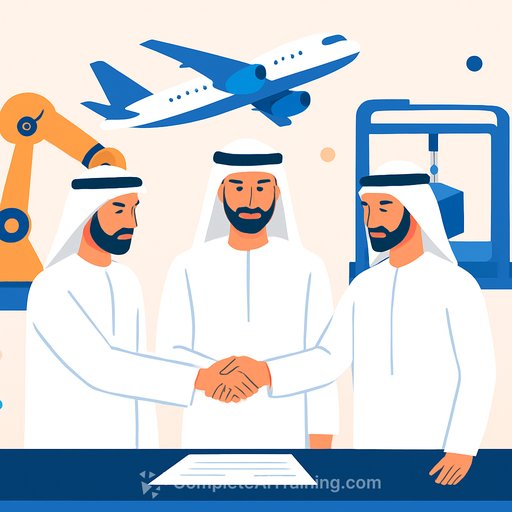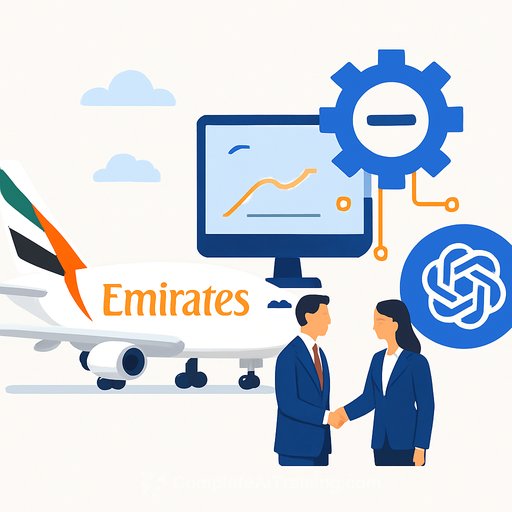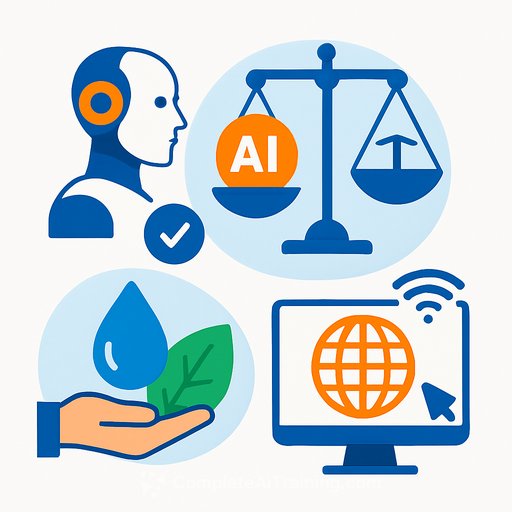Into the Omniverse: How Smart City AI Agents Transform Urban Operations
Cities are turning fragmented infrastructure into responsive systems using AI agents, digital twins and computer vision. For operations leaders, this means fewer blind spots, faster incident response and measurable gains in efficiency. The playbook is shifting from manual monitoring to simulation-led planning and automated execution.
Why Operations Teams Care
- Disparate systems and siloed data make cross-agency coordination slow and error-prone.
- Manual inspections and reactive workflows drain budgets and staff attention.
- Rare events (storms, mass transit surges, outages) are hard to test without safe, realistic environments.
- Leaders need real-time visibility, clear KPIs and predictable outcomes to justify spend.
How the Smart City AI Blueprint Works
The NVIDIA Blueprint for smart city AI combines simulation, model training and real-time AI agents inside OpenUSD-enabled digital twins. OpenUSD provides an extensible data layer for SimReady environments, connecting design, simulation and deployment.
- Stage 1: Simulate with NVIDIA Cosmos and Omniverse libraries to generate synthetic, physics-grounded sensor data.
- Stage 2: Train and fine-tune vision AI models for your scenarios and assets.
- Stage 3: Deploy video analytics AI agents with Metropolis and the Video Search and Summarization (VSS) blueprint for live operations.
This three-stage loop helps teams move from guesswork to measurable outcomes, with models refined against realistic conditions before hitting the street.
Smart Cities in Action
- Akila + SNCF Gares&Connexions (France): OpenUSD-enabled digital twins support live planning for solar heating, airflow and crowd movement across a network serving nearly 14,000 trains daily. Reported results: 20% lower energy use, 100% on-time preventive maintenance and a 50% cut in downtime and response times.
- Linker Vision (Kaohsiung City, Taiwan): Street-level physical AI identifies damaged streetlights and fallen trees, replacing manual inspections and accelerating emergency response. Built with Omniverse simulation, Cosmos Reason for world understanding and the VSS blueprint for deployment using OpenUSD workflows.
- Esri + Microsoft (City of Raleigh, USA): Using the DeepStream SDK, Raleigh reached 95% vehicle detection accuracy, improving traffic analysis. Integrated into Esri ArcGIS on Azure with a VSS-driven vision AI agent for real-time visibility across critical infrastructure.
- Milestone Systems (Hafnia VLM): A vision-language model fine-tuned on 75,000+ hours of video reduces operator alarm fatigue by up to 30% by automating review and filtering false alarms. Built with Cosmos Reason VLMs and Metropolis, rolling out as an XProtect plug-in and VLM-as-a-service.
- K2K (Palermo, Italy): Analyzes 1,000+ video streams and processes 7 billion events per year. City officials receive natural language notifications and event summaries when critical conditions are detected.
Operations Playbook: From Pilot to Scale
- Pick high-impact use cases: Traffic flow, incident triage, facilities maintenance or rail operations. Tie each to a specific KPI and budget line.
- Inventory data sources: Cameras, CAD/911, SCADA, weather feeds, transit schedules. Map ownership, SLAs and data latency.
- Build a SimReady digital twin: Start with priority corridors, stations or districts. Validate sensor placement and coverage in simulation.
- Generate synthetic data: Create rare-event datasets (storms, protests, outages) to stress-test models safely.
- Train and validate: Use staged environments to tune detection, tracking and summarization models and benchmark against your KPIs.
- Integrate with operations: Connect AI agents to VMS, dispatch, ticketing and work-order systems. Define escalation paths and human-in-the-loop steps.
- Pilot, measure, iterate: Run 60-90 day pilots. Compare response times, false alarms, and maintenance backlog before/after.
- Scale with governance: Establish model/version control, audit trails, data retention, and privacy policies up front.
- Upskill the team: Train operators, analysts and facilities staff to work with AI summaries and natural language queries.
Architecture Notes for Practitioners
- Data fabric: Standardize video, IoT and geospatial inputs with OpenUSD for shared context across agencies.
- Edge + core: Run video inference near cameras for latency; aggregate analytics in the cloud for fleet-wide insights.
- Vision-Language Models: Use VLMs to summarize hours of footage and reduce operator fatigue.
- Observability: Track model drift, false positives, throughput and GPU utilization. Alert when KPIs slip.
- Security & privacy: Apply masking, role-based access and data minimization. Log decisions for review.
KPI Benchmarks to Aim For
- Incident response time: up to 80% faster (street-level AI).
- Traffic analytics accuracy: ~95% vehicle detection (DeepStream pipeline).
- Energy use in facilities/rail: ~20% reduction with digital twins.
- Maintenance: 100% on-time preventive tasks; downtime cut by ~50%.
- Operator workload: up to 30% fewer false alarms with VLM-driven review.
Where to Start
- Explore NVIDIA Omniverse to build and connect OpenUSD-based digital twins across departments.
- Review NVIDIA Metropolis for deploying video analytics AI agents at scale.
- Building team capability? See practical upskilling paths by role at Complete AI Training: Courses by Job.
Cities that move first get compounding gains: better signal from their data, fewer manual loops and faster, cleaner decisions. Start with one corridor or facility, measure rigorously, then scale what proves its value.
Your membership also unlocks:






